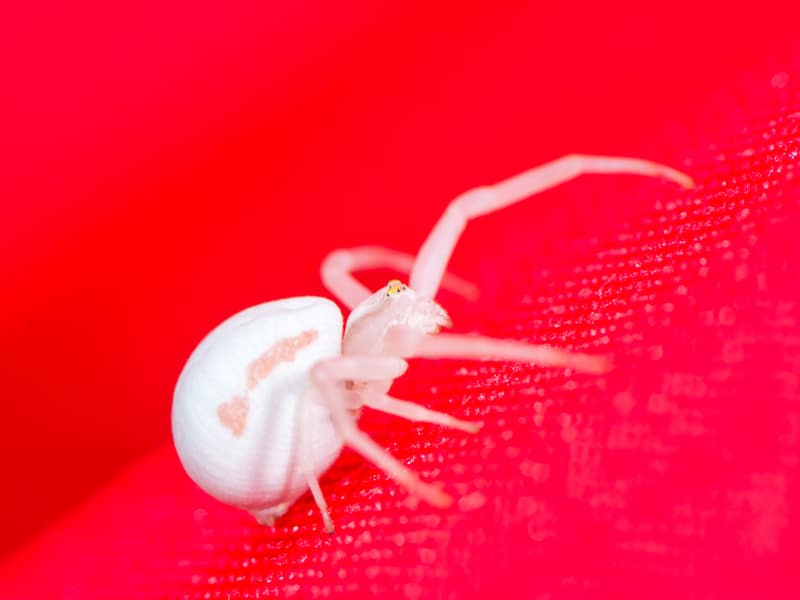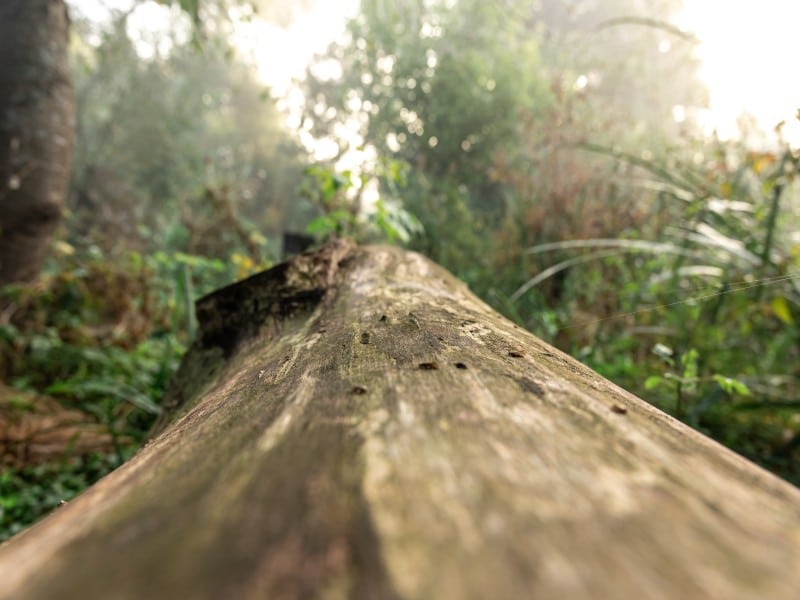
Kuwait is a tiny oil-rich country nestled at the top of the Gulf, but when planning a trip here spiders are probably the last thing on your mind. Most commonly associated with traditional Opera and being a paradise on the ground it’s known for being an up-and-coming travel destination.
However, there are still some deadly animals here that you need to be aware of. Although most of the spiders in Kuwait aren’t harmful to humans there are still some that might catch you unawares and could land you in hospital. This is why we’ve put together a guide on seven spiders in Kuwait that you need to be aware of.
From the infamous black widow to the lesser-known crab and yellow sac spiders, we have all the information you need to identify these creepy crawlies. Plus if you’re a little afraid of them you’ll now know where not to go poking around so you can limit your chances of running into them.
Black Widow (Latrodectus Cinctus)

| Species: | Latrodectus Cinctus |
| Habitat: | Dark areas such as woodpiles or crevices, dark corners of garages, and basements. |
| Characteristics: | Shiny Black in color with red hourglass/red triangles on their abdomen. Can also appear brown or slightly yellow in color. |
| Diet: | Insects such as flies, fire ants, mosquitoes, grasshoppers, beetles, woodlice, and caterpillars. |
One spider in Kuwait that you need to be aware of is the Black Widow. While these spiders have a fierce reputation, they are in fact rather calm critters. Most black widows are around 1.5 inches long and are characterized by their shiny black bodies with either a red hourglass or two red triangular marks on their abdomen. Many people believe that these spiders will bite unprovoked but this is actually a myth. The black widow will only bite if they feel threatened or as a last resort once all other options have been excluded.
In the black widow world, you’ll be happy to know that only the female can do any damage. The male species don’t carry enough venom to cause any harm. Symptoms from a female spider bite include nausea, extreme pain, vomiting, muscle rigidity, and heavy sweating. If bitten seek medical attention as soon as possible, in most cases humans will survive. They are classed as one of the most deadly animals in Kuwait.
Like other species of spiders, Black Widows have poor eyesight so rely heavily on vibrations to sense danger and detect their prey. You tend to find these spiders hiding in dark corners in garages, bricks, woodpiles, outbuildings, or basements. If there is a quiet space somewhere that’s left undisturbed then they probably make that place their home.
Camel Spider (Galeodes Arabs)

| Species: | Galeodes Arabs |
| Habitat: | Dry and hot climates such as deserts and scrublands |
| Characteristics: | Tan or dark brown in color with small fine hairs on its body |
| Diet: | Lizards, gerbils, beetles, snakes, small birds, and termites |
There is a lot of misinformation out there regarding the Camel Spider. One such rumor is that these creatures can run as fast as a human, are incredibly large, and have a voracious appetite for large mammals. But this really isn’t the case. These spiders are around 6 inches in size and their relative size is that of a teacup.
Their coloration helps them blend into their environment and the fine hairs help protect them from the desert heat. These nocturnal critters do most of their hunting by night which can put them in danger from predators such as bats, scorpions, and toads.
While they are not dangerous to humans and contain no venom their bite can pack a rather nasty punch. So it’s best to get it checked out to limit the possibility of infection. One interesting fact about these spiders is that they store fat in their bodies when food is scarce so they can survive, this is just one of the ways these spiders have adapted to their natural environment.
Pantropical Jumping Spider (Plexippus Paykulli)

| Species: | Plexippus Paykulli |
| Habitat: | Man-made structures such as houses and outbuildings. |
| Characteristics: | Males have black carapaces with a broad white stripe down the center of their abdomen and white spots near the bottom of the abdomen. Females are brownish-gray with the carapace being darker around the eyes. They also have a board tan-colored stripe down the length of their body. |
| Diet: | Flies, wasps, bees, ants, butterflies, moths, locusts, crickets, etc. |
Another spider in Kuwait is the Pantropical Jumping Spider which can usually be found on man-made structures such as houses, outbuildings, or sheds. You’ll often find this little creepy crawly near light sources as they feed on insects that are attracted by the light. They have a high carapace and are covered in short greyish hairs. The males are often 9 to 11 mm in length and can have striking accents of red on their bodies. The female is slightly larger at around 9 to 12 mm in length with no striking colors along their body, this makes them easy to tell apart.
While males tend to have black carapaces and abdomens the females tend to be brownish-gray and have darker colorings around the eyes. Immature jumping spiders often resemble females. Both males and females have four pairs of eyes with the middle pair being significantly larger than the others.
These spiders do not spin webs instead they make silk ‘retreats’ where they can safely rest when they are not out hunting for food. These aptly named spiders pounce on their prey which includes insects such as flies, grasshoppers, bees, wasps, and bugs. While they are venomous these spiders pose no threat to humans and their bites aren’t likely to break the skin.
Wolf Spider (Lycosidae)

| Species: | Lycosidae |
| Habitat: | Forests, deserts, plains, wetlands, shrubs, meadows, and inside houses |
| Characteristics: | Black, brown, or gray in color mixed with light orange or tan markings, large eyes, bulky bodies, and large mouth appendages |
| Diet: | Ants, beetles, crickets, and other insects |
Unlike some spiders in Kuwait, the wolf spider does not spin an elaborate web to catch its prey, instead, they hunt like its namesake the wolf. These unusual spiders have large mouth appendages to help with hunting and are often black, brown, or gray in color with a mix of either light orange or tan colored markings.
Wolf spiders have a body size of around 0.24 and 1.2 inches, however, their legs are significantly larger than their body making them appear much larger than they actually are. They have eight eyes located around their head in three rows. Two eyes are located at the top, two are at the front of the head, and the last four are located above the mouth. The smaller eyes provide secondary vision and produce a powerful glow in the light.
While these spiders are venomous they aren’t considered dangerous to humans. Unless you have an allergic reaction you are unlikely to die from their bite. The worst that will happen is slight swelling, redness, and itchiness at the bite site.
Crab Spider (Thomisidae)

| Species: | Thomisidae |
| Habitat: | Meadows, grasslands, marshes, scrubland, woodlands, gardens |
| Characteristics: | Many different colors and shades of white, black, brown, yellow, blue, green, and pink with strips, bands, spots, or blotches as markings. Bodies are flat with two claws and legs held crabwise to run sideways |
| Diet: | Insects such as flies, aphids, caterpillars, crickets, wasps, grasshoppers, bees, and beetles |
Crab spiders in Kuwait can be found in many different shades and colors depending on their environment. As their name suggests they resemble a crab with two claws, flat bodies, and legs splayed outwards allowing them to run sideways. These beautiful spiders are often found in meadows, rainforests, grasslands, marshes, and more and can often be hard to spot as they blend in so well with their surroundings.
As their venom is rather potent for their size they can hunt and eat prey that’s much larger than they are. This includes insects such as grasshoppers, wasps, bees, and crickets. You’ll be happy to know, that these spiders in Kuwait pose no threat to humans. If bitten you’re likely to have a painful bite wound for a few hours but nothing more serious than that.
Like many other spiders mentioned above, the crab spider does not spin a web instead they prefer to ambush its prey using camouflage. Female crab spiders tend to be larger than the ales at around 0.39 inches at their largest. Males only tend to grow to around 0.27 inches.
Woodlouse Spider (Dysdera Crocata)

| Species: | Dysdera Crocata |
| Habitat: | Dark damp habitats such as old logs, cellars, basements, and places where woodlice live |
| Characteristics: | They have a red, orange, or brown cephalothorax along with a bulbous, off-white abdomen. They have two rounded black fangs and six eyes |
| Diet: | Mainly woodlice, but will also eat millipedes, beetles, and other insects |
Also known as the woodlouse hunter or the sowbug hunter, the woodlouse spider is found in many parts across the world from Kuwait to America. You’ll often find these creepy crawlies in dark damp habitats and places where woodlice hide as they form the vast majority of their diet.
While most spiders have eight eyes, the woodlouse spider only has six. They are also red, orange or brown in color with an off-white abdomen, however, they have been mistaken for Brown Recluse Spiders in the past due to the similar color and sizing. A male woodlouse spider is between 0.3 and 0.4 inches in length whereas the female is between 0.4 to 0.5 inches in length.
One extremely interesting fact regarding these spiders in Kuwait is that their fangs are capable of breaking throught the exoskeleton of an insect. Their venom is potent to their prey but not considered harmful to humans. If bitten the result is likely to be painful and the skin will be irritated at its worst. They are only likely to bite you in self-defence though or if they feel threatened.
Yellow Sac Spider (Cheiracanthium Inclusum)

| Species: | Cheiracanthium Inclusum |
| Habitat: | Urban and agricultural areas |
| Characteristics: | Pale yellow to pale green in color, can also be red or orange. Legs tend to be translucent with black tips |
| Diet: | Insects and anthropods including cockroaches, their own eggs, and other spiders |
The Yellow Sac Spider is often found in urban and agricultural areas throughout Kuwait. Many people have found this spiders hiding in their silk retreats in high corners of their house especially in the cooler months. Outside though you’ll find them hiding in wood piles, outbuildings, meter boxes, and rocks.
These spiders are primarily nocturnal and won’t often be seen during the day unless disturbed. While they are venomous they pose no real threat to humans. The Yellow Sac Spider’s bite produces nothing more than localized redness, swelling, and a mild burning sensation at the bite site. Be sure to double check clothing and shoes before wearing them as they can often get caught up in them.
The color of these spiders in Kuwait varies so much that it’s not often a good way of identifying them. However, they can be identified by their legs which are significantly larger than their body, with the two front legs being even longer then the rest.
